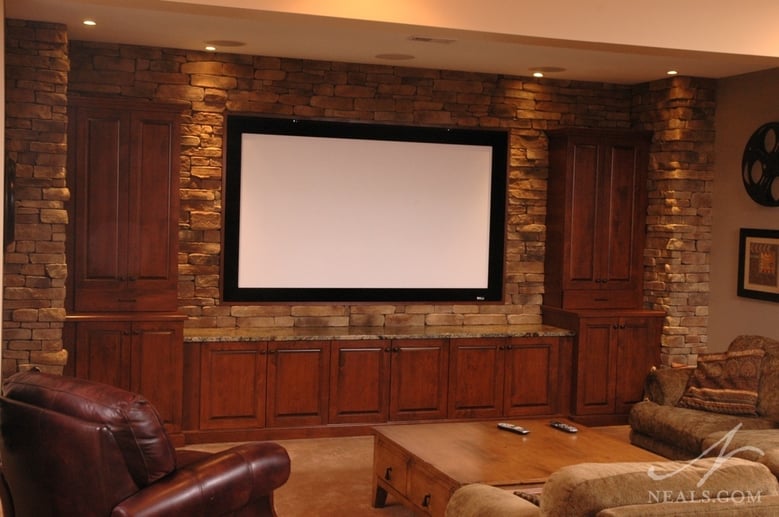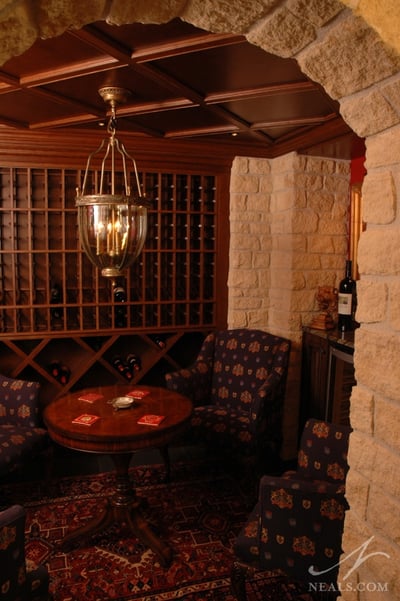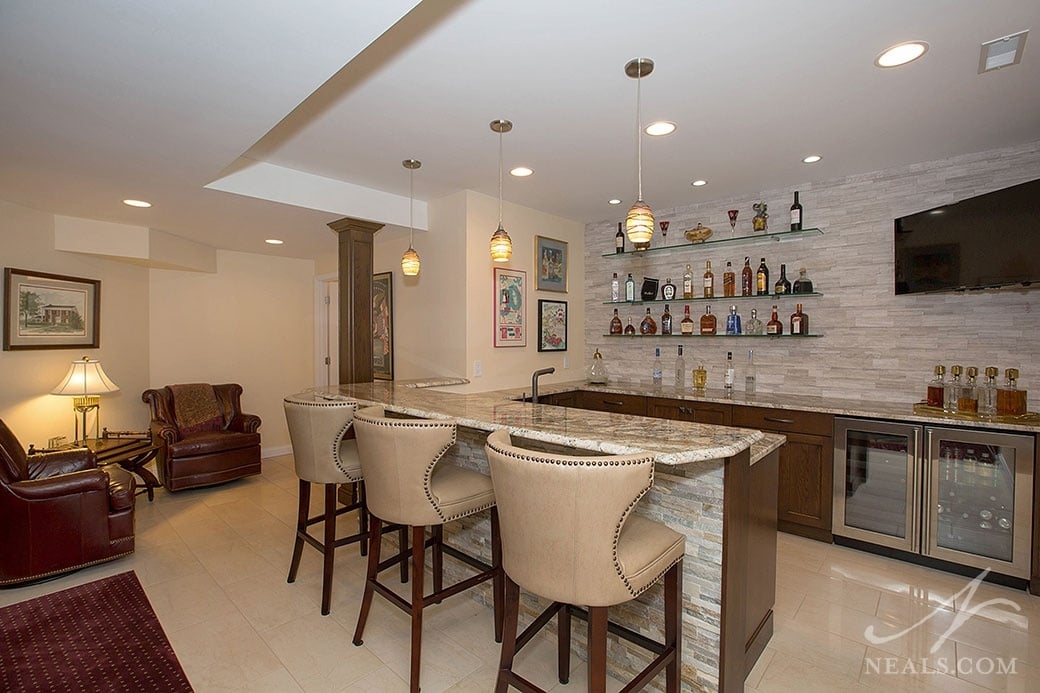Updated: 10/10/17 | Original Post: 6/14/16
Using stone as an accent inside the home is a popular design choice. That natural look and texture of stone juxtaposed with interior decor creates a casual look, but also injects the timelessness of a rustic architectural statement. It's not a one-size-fits-all option, however, and there are several ways to apply it that can drastically change the finished look from one option to the next. Here are some interior stonework design ideas you should know when choosing interior stonework for your home.

Lower level remodel in Montgomery.
For interior applications, stonework is most often found in finished lower levels and in dens or living rooms as fireplace surrounds. Other locations might be as a feature wall or an accent to a foyer, or covering the lower portion of a peninsula in the kitchen. In general, stone is used more often in the shared spaces of the house, more than in bedrooms or bathrooms, but that's not to suggest that those areas are off limits. Stone can be used to great effect in the master bath, for example.
 Lower level remodel in Newtown.
Lower level remodel in Newtown.
Even though the specific type, color and installation of stone you choose will change, all interior stonework will bring a textured, imperfect look to any space it's in. It's not an inherently traditional interior material, but the reminder that traditional style comes from the bygone era of homes made from stone gives it a place none-the-less. Stone can be used in contemporary spaces as well, relying on color and texture to add to the modern look of the room. So there's no real reason that stone can't be used for any type of project or room, given such flexibility. Stone does, however, add a style statement that can, if used too much or in the wrong way, overpower a room. Working with a designer can help you discover where that boundary is in your space, as well as help you narrow down the options to the look that suits your style and your home the best.
 Wine cellar in an Anderson Township basement remodel.
Wine cellar in an Anderson Township basement remodel.
The better natural option is natural thin veneer. As consumers began rejecting natural stone, manufacturers developed new techniques for cutting the stone to reduce weight and thickness. This results is a natural, real stone product, with all the variation and beauty that comes with it, but with a reduction in the labor needed to install it.
Manufactured stone, also called cultured stone, is not actually stone at all. Instead, real stones are used to create molds that are then filled with a type of cement with a painted facade. The result looks natural, as long as you don't start looking too close at the all-over look. Since there are a limited number of molds, the same stone will be seen a few times, depending on the scale of yur project. The advantage to manufactured stone shouldn't be hard to guess- lower price point and easier installation.

Basement remodel in Western Hills.
When it comes to installation, no matter what product you go with, real or manufactured, the surface you are attaching it to has to be able to handle the weight. Also, the stones must be adhered properly so that they are permanently attached (and don't go falling off the wall in the middle of the family holiday party). The bigger issue to consider during installation is the difference between real stone veneer and manufactured stone when it is cut. For projects in which the edge of the stone application will be visible, but the vertical line of that edge will need to be straight, it's important to layout manufactured stones on those edges first, then leave any cutting for stones on the interior. That way, the unpainted cement of the interior of the stone won't be as visible. The repeat should also be randomized, so that the matching stones aren't as easy to pick out.

Laundry room remodel in Glendale.
Stone veneers come is a few style types. The most popular is a drystack ledgestone in which the rectangle-shaped edges of the stone are the visible front. Rectangular or square veneer uses the tops of the stone, with cut edges on all four sides, as the visible front. The stones are placed against each other similar to tile, but the stone sizes are often not uniform. Mosaic tile, also sometimes called field stone, also uses the tops of the stones, but the edges are left in their natural, irregular shape, creating more of a puzzle-like look where the pieces are fit together as close as possible. River rock veneer is that same idea, only the stones are more 3-dimensional and rounded on their edges. Each of these installations result is very different looks, and this is, for the most part, the first thing to consider when narrowing down the options for your project, followed by rock type and color.











